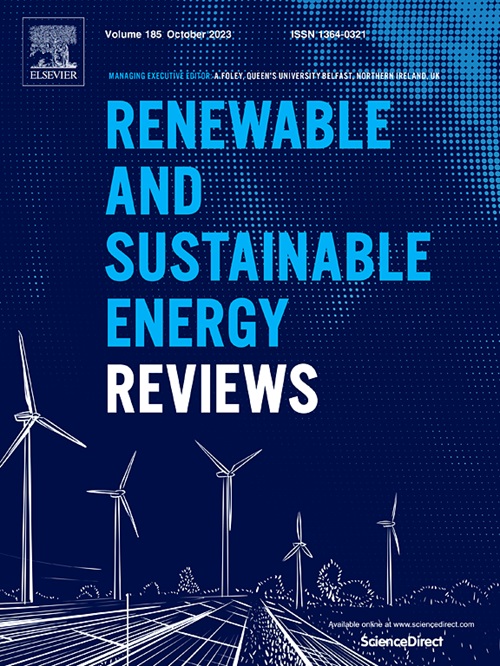Sustainable urban designs integrating aboveground microclimates and underground heat islands: A systematic review and design strategies
IF 16.3
1区 工程技术
Q1 ENERGY & FUELS
引用次数: 0
Abstract
Current theoretical models and analytical techniques in urban microclimates primarily concentrate on the ‘underlying surface’ spanning from the boundary of the urban canopy layer to ground level. However, they frequently neglect the impacts of underground spaces such as buildings, transportation, and utility tunnels, serving as heat sources affecting pedestrian thermal comfort, urban energy consumption, and geothermal energy. Moreover, idealised soil temperature models employed in numerical simulations fail to consider disturbances from aboveground and underground built environments. Consequently, this results in inaccuracies when predicting underground spaces' physical environment and energy consumption. First, this study systematically reviews aboveground microclimate and underground heat islands, summarising correlation mechanisms and key design highlights. Then, an environmental concept of the ‘underlying layer’ is proposed to expand the research scope to the boundary of the variable temperature soil layer, encompassing shallow underground spaces and accounting for underground heat islands. After that, this study discusses multi-scale and multi-process numerical simulation, spatial information modelling, energy balance models, and thermally disturbed soil temperature modelling. Finally, sustainable urban design approaches and strategies are discussed from functional layout, urban form, ground surface, and geothermal energy utilisation. This study bridges the gap in the physical environment and urban energy of aboveground-underground integration. It elucidates the practical needs and critical techniques of environmental modelling and prediction approaches, thereby enhancing urban design, energy conservation and carbon reduction in sustainable cities.

求助全文
约1分钟内获得全文
求助全文
来源期刊

Renewable and Sustainable Energy Reviews
工程技术-能源与燃料
CiteScore
31.20
自引率
5.70%
发文量
1055
审稿时长
62 days
期刊介绍:
The mission of Renewable and Sustainable Energy Reviews is to disseminate the most compelling and pertinent critical insights in renewable and sustainable energy, fostering collaboration among the research community, private sector, and policy and decision makers. The journal aims to exchange challenges, solutions, innovative concepts, and technologies, contributing to sustainable development, the transition to a low-carbon future, and the attainment of emissions targets outlined by the United Nations Framework Convention on Climate Change.
Renewable and Sustainable Energy Reviews publishes a diverse range of content, including review papers, original research, case studies, and analyses of new technologies, all featuring a substantial review component such as critique, comparison, or analysis. Introducing a distinctive paper type, Expert Insights, the journal presents commissioned mini-reviews authored by field leaders, addressing topics of significant interest. Case studies undergo consideration only if they showcase the work's applicability to other regions or contribute valuable insights to the broader field of renewable and sustainable energy. Notably, a bibliographic or literature review lacking critical analysis is deemed unsuitable for publication.
 求助内容:
求助内容: 应助结果提醒方式:
应助结果提醒方式:


